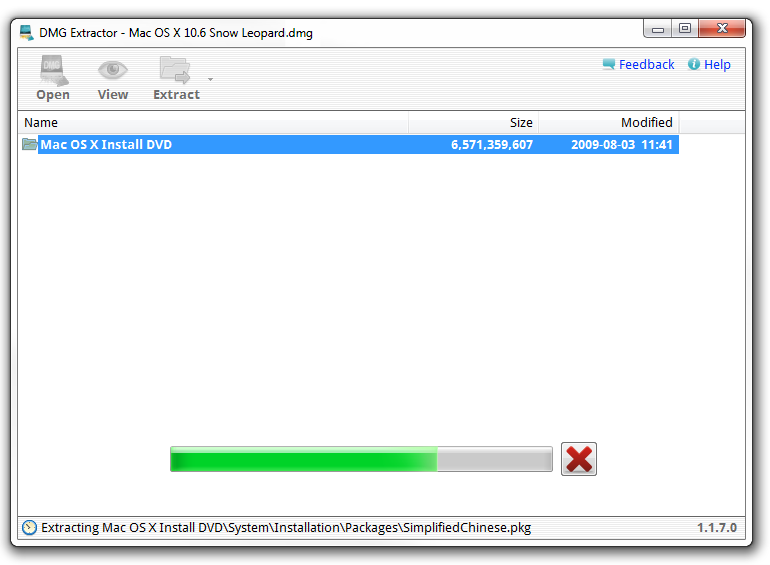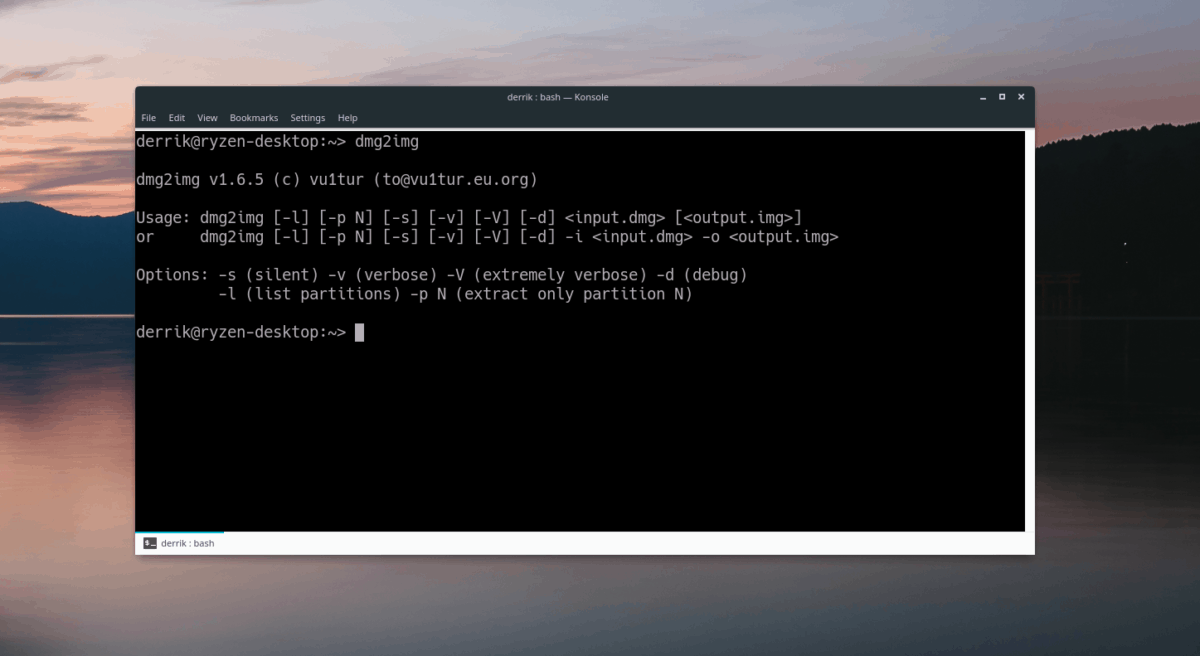Install Dmg File On Linux
Ubuntu is a common variant of Linux, complete with a user-friendly interface and full flexibility in customizing it via the Terminal window. Windows and Linux share the ability to open ISO files, which are similar to DMG files. Though DMG files are commonly associated with Apple's operating system, Mac. Open DMG File on Linux. DMG files use Hierarchical File System (HFS) as a disk file system format. In order for your Linux machine to open DMG files it needs to support HFS and HFS+. To enable HFS and HFS+ support on your Linux machine you will need to install HFS tools and kernel modules. How to burn.dmg on windows. Jun 11, 2019 Open a DMG. Catacombae HFSExplorer can view DMG files on Windows, too (and Linux), but also lets you create new DMG files. Both programs are completely free. Both programs are completely free. A free tool called dmg2iso will convert the DMG image file to an ISO image file, which is much more usable in Windows.
This guide covers the verbatim copying of a DMG image to a USB thumb drive using only Linux (no need to find a Mac). If the DMG was intended to be bootable then the resulting USB will be bootable.
Convert to ISO
Linux doesn’t much care for DMG files. Sure, it’ll play nice with them. But we don’t just want to play nice. We want to copy a DMG image to a USB drive and keep it as verbatim as computationally possible. In order to do this, we’re first going to convert the image to a format that’s a little more universal: ISO.
We’re going to use dmg2img to convert the DMG to an ISO image. If you already have dmg2img, great. If not, install it using your distribution’s native package management system.
On Ubuntu, you’d do it like this:
Once you have dmg2img installed, begin converting the DMG file:

After a few minutes, you should have a second file called image.img. This file can be used like an ISO. All we have to do is change the extension. Use mv to do this:
Make sure you specified “image.img” and not “image.dmg”! Working with three different file extensions can get kind of confusing.
Ok, so we should now have a file called “image.iso” which is just “image.img” with a different extension.
Now we want to write “image.iso” to our USB drive. I used “lsblk” to figure out how the system was identifying my drive. The lsblk command lists all disks connected to the system. It’s usually pretty easy to figure out which disk is which based on their size. Just be sure you’re sure. This process is going to overwrite the target disk with the contents of our DMG image file. Any preexisting files on the target disk will be lost. As usual, make sure you have a proper backup.
Make sure the target drive isn’t mounted. Unmount the drive with your distribution’s GUI.
Or you could just unmount it from the terminal:
Most systems seem to mount external drives in /media. Sometimes the drive might be mounted in /mnt or elsewhere.
Write the ISO image to the USB drive like this:
Replace “X” with the appropriate letter. For example “/dev/sdb”. Be sure to use the drive directly and not a partition within the drive. For example, don’t use “/dev/sdb1”.
This will probably take a little while to complete. I’m using a Kingston DataTraveler DTSE9 and it took about 24 minutes 30 seconds to write 4.9GB.


Your new USB stick should now be bootable, assuming that was the intended purpose of the DMG.
If you want to convert DMG to ISO, it's good to learn a little about disk image file types and what they're meant for. Essentially, a disk image is a snapshot of the content on a DVD, CD, BRD or even a hard drive. It could be just a set of media files, but it can also contain software installation files. In the second case, the disk image will also need to contain boot information in order to boot from the media.
Specifically, DMG is what Apple uses for the macOS environment, while ISO is more widely used in Windows-based and Linux environment. At times, you may need to convert DMG to ISO so you can mount it as a virtual drive on a Windows machine to extract the contents, view them or burn them to create bootable media. The process to convert DMG to ISO is different based on which operating system you're using for the conversion. This article shows you how to convert DMG files to ISO files on Windows, Mac and Linux.
Method 1: How to Convert DMG to ISO on Windows 10 (DMG2IMG)
DMG2IMG is a software utility that converts DMG files into Apple's older IMG format as well as the universally used ISO format. The process is simple, but it requires some command line work. The steps to use DMG2IMG to convert DMG to ISO have been detailed below:
Step 1. Download and install DMG2IMG on your Windows computer. Once the installation is done, open File Explorer and go to the location where you downloaded the application.
Step 2. Right-click on the folder where the software has been downloaded, and select 'Open command window here…' to launch Command Prompt.
Step 3. In Command Prompt, execute the following command (click Enter after typing in the command):
dmg2img 'C:UsersSample UserDesktopsample.dmg' 'C:UsersSample UserDocumentsConvertedRandom.iso'
Step 4. Please note that the double-quotes are required only if you have a space in your file path. In this example, there's a space between Sample and User, so the quotes are needed. If there are no spaces, you can do away with the quotes.
This method only works in 32-bit Windows versions. The conversion is usually done accurately, but you may come across errors that can corrupt the output ISO file. If you're going to be doing a lot of such conversions from DMG to ISO, we recommend getting a proper software utility.
Method 2: How to Convert DMG to ISO on macOS (Disk Utility)
Mac OS X and macOS offer an easier way to convert DMG to ISO, which is only natural because DMG is the native disk image format used by Apple. The Disk Utility that's built into Mac will help you do the conversion from DMG to ISO. Follow the steps below to convert your disk image files:
Step 1. Launch Disk Utility in Mac from Applications > Utilities.
Step 2. Open a Finder window and double-click on the DMG file to mount it. You should be able to see it on the left panel in Disk Utility.
Step 3. Right-click the DMG file in the left panel and select 'Convert'. In the new window that appears, select 'DVD/CD Master' as your output and click on Save. This will save your DMG file in a format with the extension .cdr.
/dmg-files-5a70925bba6177003785cc17-64d5a90ff22744d6a18e67005953d68b.png)
Step 4. Rename the file by replacing .cdr with .iso. The file is now in the ISO format.
The exported ISO file can now be burned to a disk, or mounted within Mac as a virtual drive so you can view or extract the contents. The conversion process is quick, and it's convenient because it does not require any additional software.
Method 3: How to Convert DMG Files to ISO on Linux
Install Dmg File On Linux
In a Linux machine, you can use Terminal to convert DMG to ISO. For this, you will first need the Linux version of DMG2IMG. You can get it using a Terminal command, as shown below:
How To Install Dmg File On Linux Mint
Step 1. Execute the following command in Terminal:
sudo apt-get update
sudo apt-get install dmg2img
Step 2. You can now proceed with the conversion command: dmg2img example.dmg example.iso
Step 3. You can also define a specific file path for the output (converted) file, but this basic command is what you need to use for the conversion.
As with any file conversion, the process to convert DMG to ISO could present some hurdles, such as corrupted files at output. If you see this happening multiple times, it's possible that the source file itself is corrupted. In such cases, it's better to try and get an authentic download rather than struggle with a corrupt file. In any case, if you're sure the DMG file is verified, these methods to convert DMG to ISO in Windows, macOS and Linux should work for you.